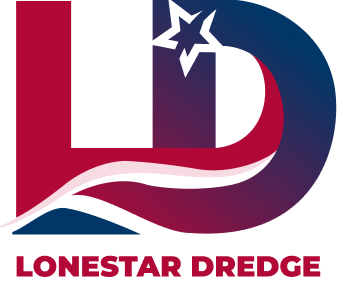Submersible pumps are critical in a wide range of industries, from construction and mining to dredging and wastewater management. Designed to operate while fully submerged in liquid, they are highly effective at handling challenging pumping tasks such as dewatering, slurry removal, and wastewater transfer. Their ability to function directly at the source of the liquid makes them more efficient than other types of pumps, especially in environments with high water tables, heavy sediment, or corrosive materials.
However, the decision to rent versus buy isn’t always straightforward. While renting offers flexibility and lowers initial costs, questions about performance, reliability, and long-term expenses remain. This raises an important consideration for project managers and procurement professionals: Does renting a submersible pump provide the best balance between cost and performance? In this blog, we’ll explore the key factors to consider when evaluating submersible pump rentals and how they can impact your project’s efficiency and budget.
Understanding Submersible Pump Rentals
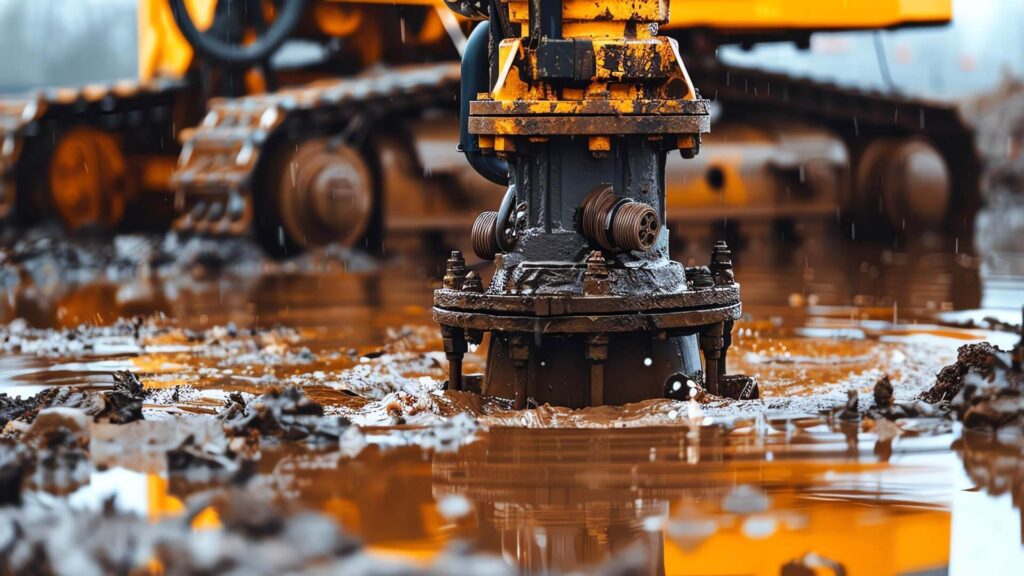
What is a Submersible Pump?
A submersible pump is a type of pump designed to operate while completely submerged in the liquid it is tasked with moving. Unlike other pumps that require priming and external suction, submersible pumps push liquid to the surface rather than pulling it, making them highly efficient in handling water, slurry, and wastewater. The motor of a submersible pump is hermetically sealed, preventing water from entering and causing damage while enabling continuous operation under demanding conditions.
Submersible pumps stand out from other types of pumps due to their unique design and operational advantages:
- Centrifugal pumps operate above ground and rely on suction to move liquid, making them less effective in deep or heavily saturated environments.
- Diaphragm pumps are suited for moving viscous materials and sludge, but they typically have lower flow rates and pressure capacity than submersible pumps.
- Submersible pumps, by contrast, are directly immersed in the fluid, minimizing energy loss and increasing efficiency. This makes them ideal for high-volume, high-head, and heavy-duty applications.
Common Applications of Submersible Pumps
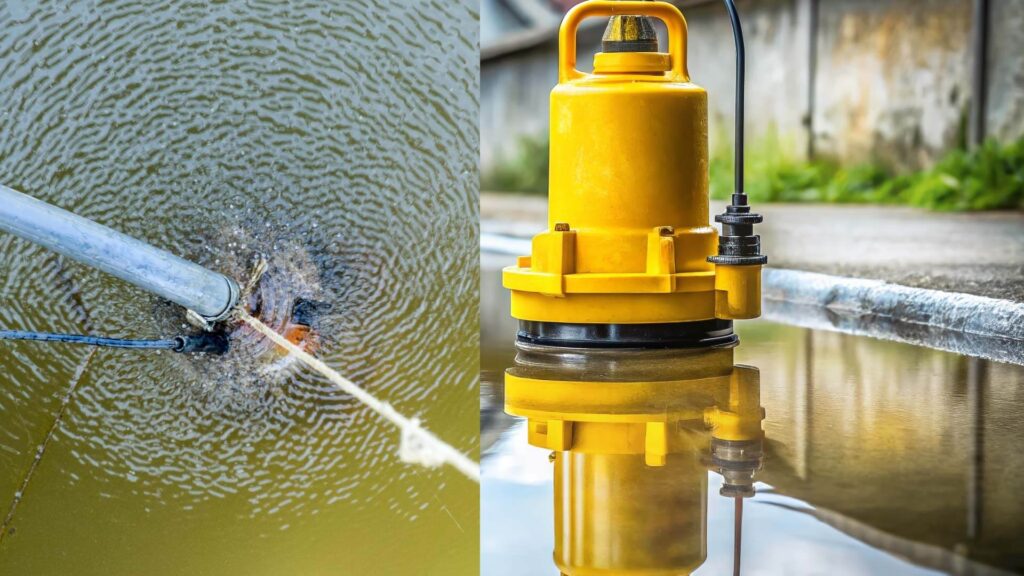
Submersible pumps are widely used across multiple industries due to their efficiency and reliability:
- Construction – Removing groundwater from excavation sites, dewatering flooded areas, and managing stormwater runoff.
- Mining – Handling slurry, abrasive materials, and wastewater from mining operations.
- Dredging – Transporting sediment, sand, and debris from rivers, harbors, and lakes.
- Wastewater Management – Pumping sewage, sludge, and treated wastewater in municipal and industrial settings.
- Agriculture – Irrigation and drainage of flooded fields and irrigation channels.
What is a Submersible Pump Rental?
A submersible pump rental is a temporary solution that allows companies to access high-performance submersible pumps without the long-term financial commitment of purchasing. Renting provides flexibility to scale operations, manage short-term projects, and handle unexpected demands without incurring the high capital expenses associated with pump ownership.
The rental process typically includes several key steps:
- Selection – The rental provider helps select the appropriate pump model based on the project’s requirements (e.g., flow rate, head, type of material).
- Delivery – The rental company delivers the pump directly to the project site, ensuring quick deployment.
- Setup – Technicians assist with installing the pump, ensuring proper alignment, connection, and configuration.
- Support – Ongoing technical support is provided to address any operational issues and maintain performance during the rental period.
Why Companies Choose Submersible Pump Rentals
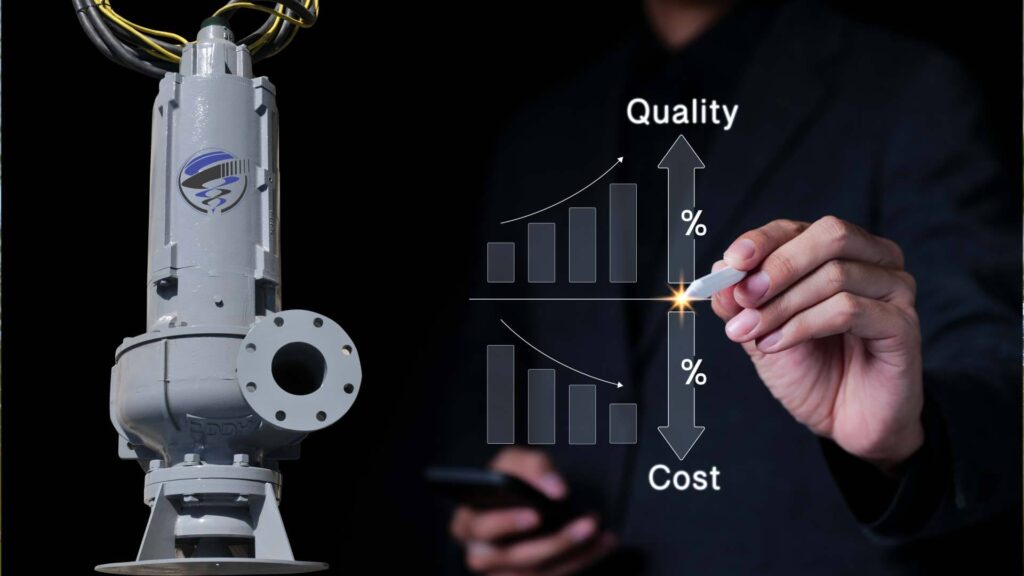
Businesses across industries increasingly opt for submersible pump rentals for several strategic reasons:
- Cost Savings – Renting reduces upfront capital costs and eliminates the need for long-term maintenance expenses.
- Project Flexibility – Rentals allow businesses to adjust pump capacity and specifications as project needs change.
- Quick Turnaround – Rental companies offer fast delivery and setup, minimizing downtime during critical operations.
- Access to Latest Technology – Rental providers maintain a fleet of modern, high-efficiency pumps, ensuring that businesses have access to the best equipment without needing to invest in new models.
- Maintenance and Repairs Included – Most rental agreements include maintenance and repair coverage, reducing unexpected costs and downtime.
Cost Considerations of Renting a Submersible Pump
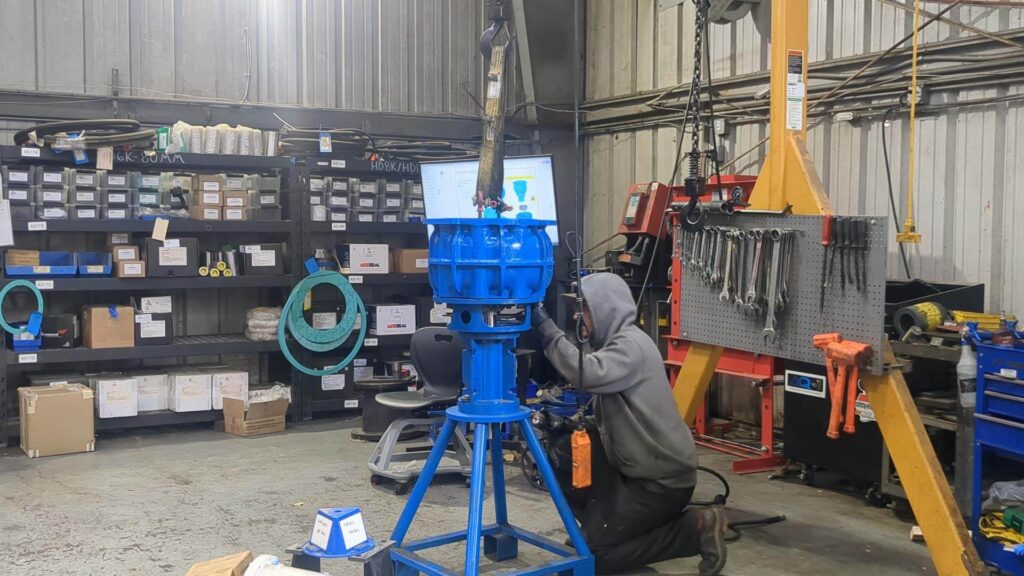
Initial Investment and Operating Costs
One primary reason companies choose to rent a submersible pump rather than purchase one is the reduced upfront investment. Buying a submersible pump requires a significant capital outlay, which may not be justifiable for short-term or irregular projects. In contrast, renting allows businesses to access high-performance equipment without tying up capital in expensive assets.
Rental agreements typically offer flexible payment structures based on the project’s duration and scope:
- Daily rates – Ideal for emergency or short-term dewatering and pumping needs.
- Weekly rates – Cost-effective for mid-range projects where pump usage extends beyond a few days.
- Monthly rates – Best for long-term projects requiring continuous or intermittent pump operation.
The advantage of renting a submersible pump is that it enables companies to align costs directly with project timelines, avoiding unnecessary expenses associated with idle equipment. In many cases, renting a pump for a short—to—medium—term project proves more economical than purchasing, especially when factoring in depreciation, maintenance, and storage costs.
Strategic rental planning can also achieve long-term savings. For example, rather than investing in a single high-capacity pump that may be underutilized, businesses can rent different models as needed, optimizing both cost and performance based on project requirements. This “pay-as-you-go” approach allows for better cash flow management and improved budget control.
Maintenance and Repairs
One of the hidden costs of pump ownership is maintenance and repair. When purchasing a pump, companies are responsible for regular maintenance, including parts replacement, wear-and-tear repairs, and unexpected breakdowns. If not handled promptly, these costs can accumulate quickly and lead to significant downtime.
With submersible pump rentals, maintenance and repairs are often included in the rental agreement. Most rental providers offer comprehensive service plans that cover:
- Regular maintenance – Ensuring the pump operates at peak efficiency.
- Emergency repairs – Immediate replacement or repair in the event of a breakdown.
- 24/7 technical support – Providing guidance and troubleshooting to minimize downtime.
By outsourcing maintenance to the rental provider, businesses avoid the costs and operational disruptions associated with pump failures. This ensures that the rented pump remains in top working condition throughout the project, reducing the risk of unexpected expenses and operational delays.
Furthermore, rental companies typically maintain a fleet of modern, well-maintained pumps. This allows businesses to access newer models with improved efficiency and reliability, further reducing the chances of mechanical issues and maximizing productivity.
Flexibility and Scalability
Project requirements can change quickly, and the ability to adapt is critical for maintaining efficiency and meeting deadlines. Submersible pump rentals offer unmatched flexibility and scalability, allowing businesses to adjust to changing project demands without the financial strain of purchasing new equipment.
Key advantages of rental flexibility include:
- Different pump sizes and configurations – Rental companies offer a range of submersible pumps tailored for different applications, such as high-flow dewatering, abrasive slurry pumping, or wastewater management.
- Seasonal or short-term needs – Renting is ideal for temporary projects where long-term ownership isn’t cost-effective.
- Upgrading or downgrading – If project demands change mid-operation, companies can switch to a different pump model without financial penalties.
For long-term projects, rental agreements can be structured to provide continuous access to different pump models as project needs evolve. This eliminates the need to over-invest in equipment that may not be suitable for future applications.
Moreover, businesses with fluctuating workloads benefit from rental scalability. For example, a mining operation facing seasonal increases in groundwater inflow can temporarily increase pumping capacity by renting a submersible water pump rather than investing in additional equipment that may remain idle during off-peak periods.
The ability to rent pumps on an as-needed basis ensures that businesses maintain operational efficiency without overextending capital resources. Submersible pump rentals are, therefore, a strategic solution for companies seeking both cost control and operational flexibility.
Performance Factors to Evaluate When Renting a Submersible Pump
Pump Capacity and Efficiency
Selecting the right pump for the job is essential to ensuring operational efficiency and cost-effectiveness. When considering a submersible pump rental, it’s important to evaluate the pump’s flow rate and head capacity to match the project’s specific requirements.
- Flow Rate – The flow rate, measured in gallons per minute (GPM) or cubic meters per hour (m³/h), determines how quickly the pump can move liquid. For large-scale dewatering or slurry removal, a higher flow rate is essential to maintain productivity and prevent site flooding.
- Head – The head measures the vertical distance the pump can lift water, factoring in friction loss and pressure requirements. Selecting a pump with the appropriate head capacity ensures consistent performance, especially in deep excavation sites or dredging operations.
- Pump Efficiency – Rented submersible pumps are often newer and more energy-efficient than owned equipment. Rental companies frequently update their fleets with modern, high-performance pumps designed to handle higher capacities while using less power. Improved efficiency translates to lower operational costs and increased reliability.
Understanding the working environment is also critical when selecting a submersible water pump rental:
- Clear Water – For construction site dewatering or flood control, a high-flow, low-head pump is usually sufficient.
- Slurry and Solids—A heavy-duty slurry pump with an abrasion-resistant impeller is required for mining or dredging applications.
- Wastewater—A solids-handling submersible pump with a cutting mechanism or non-clog design is ideal for managing sewage and industrial waste.
By carefully matching the pump’s specifications with the project’s demands, businesses can ensure consistent performance and avoid overloading or underperforming equipment.
Durability and Reliability
Reliability is a key consideration when choosing a submersible pump rental. Equipment failure can lead to costly downtime, missed deadlines, and increased labor costs. Rental companies maintain their fleets to high standards to ensure pumps are ready to perform under demanding conditions.
- Maintenance and Testing – Reputable rental providers regularly inspect, test, and service their pumps to ensure peak performance. This includes checking for wear and tear, testing motor efficiency, and replacing worn parts.
- Operational Demands – It’s essential to ensure that the rented pump can withstand the specific environmental and material challenges of the project. For example, pumps used for abrasive slurry or corrosive liquids must be built with heavy-duty materials and protective coatings.
- Newer vs. Older Models—Renting allows businesses to access newer pump models, which feature improved efficiency, durability, and smart control features. These pumps are often more resistant to wear and offer higher flow rates with reduced energy consumption.
Rental companies often remove older pumps from their fleets and replace them with newer models, ensuring that clients have access to state-of-the-art technology without the high costs of purchasing and upgrading equipment.
Ensuring the rented pump meets project demands is not just about capacity — it’s about the pump’s ability to perform reliably under real-world conditions. Businesses should work closely with the rental provider to select the most suitable pump based on the expected workload and environmental factors.
Customization and Adaptability
One of the key benefits of submersible pump rentals is the ability to customize the equipment to fit specific project needs. Unlike purchased pumps, which may require costly modifications, rental pumps can be selected and configured based on unique site conditions and performance requirements.
- Pump Materials – Different working environments require different pump materials to ensure longevity and performance:
- Stainless steel – Best for corrosive environments or chemical processing.
- Cast iron – Durable and abrasion-resistant for heavy-duty mining and dredging applications.
- Polyurethane coatings – Ideal for handling fine sediment and minimizing wear.
- Site Compatibility – Rental pumps can be adapted to integrate with existing infrastructure, including pipelines, discharge systems, and power sources. Rental companies can supply necessary accessories such as hoses, couplings, and power converters to simplify installation.
- Modifications and Setup – Depending on project requirements, rental providers can modify pump configurations to handle specific materials, increase flow rates, or improve solid-handling capabilities. This includes:
- Installing specialized impellers for slurry and solids.
- Adjusting motor speed to optimize flow rate and head.
- Adding protective coatings for chemical resistance.
A submersible water pump rental allows for the adjustment and customization of pump performance, ensuring that the equipment meets the specific challenges of each project. This level of flexibility is difficult to achieve with purchased pumps unless significant investments are made in modifications and upgrades.
Operational Advantages of Submersible Pump Rentals
Reduced Downtime and Fast Deployment
One key benefit of renting a submersible pump is the ability to reduce downtime and ensure fast deployment. In industries like construction, mining, and dredging, operational delays can lead to significant financial losses and missed deadlines. Rental companies understand the urgency of these situations and are equipped to provide rapid solutions.
- Quick Delivery and Setup—Most rental companies maintain a large inventory of submersible pumps, allowing them to offer quick turnaround times. Once a rental agreement is confirmed, pumps can be delivered and installed on-site within hours or days, depending on the location and project requirements.
- Emergency Rental Options – Unexpected equipment failure can derail a project. Reputable rental companies offer emergency response services, ensuring that a replacement submersible water pump rental can be dispatched and installed quickly to minimize downtime.
- Fast Replacements – If a rented pump malfunctions during operation, rental companies typically provide fast replacements at no additional cost. This ensures that projects stay on schedule without the financial burden and delay of waiting for repairs or spare parts.
Fast deployment is particularly valuable in industries where environmental factors, such as flooding or high water tables, require immediate water removal or slurry management. The ability to quickly access and install a high-performance submersible pump rental can mean the difference between a minor setback and a major operational disruption.
Access to Expert Support and Training
Another major advantage of submersible pump rentals is the access to professional support and training. Pump performance depends not only on the equipment itself but also on proper installation, operation, and maintenance. Rental companies provide technical expertise to ensure that rented pumps are configured and operated correctly from the start.
- On-Site Setup and Support—Most rental providers include professional installation in the rental agreement. Trained technicians handle the setup, including aligning the pump, securing connections, and configuring performance settings to match project requirements.
- Staff Training – Rental companies often provide on-site or remote training to ensure that project staff understands how to operate and maintain the rented pump. This includes guidance on:
- Monitoring flow rates and pressure levels.
- Identifying signs of wear or mechanical issues.
- Adjusting pump settings for optimal performance.
- Troubleshooting Assistance—If issues arise during operation, rental companies typically offer 24/7 support to diagnose and resolve them. This includes phone support, remote monitoring (if available), and on-site repairs when necessary.
Having direct access to expert support reduces the learning curve for operating submersible pumps and ensures that any performance issues are resolved quickly. This level of technical assistance minimizes disruptions and maximizes pump efficiency, which is especially important for time-sensitive projects.
Compliance and Safety
Ensuring compliance with industry standards and maintaining a safe working environment are critical when using high-performance equipment like submersible pumps. Rental companies play a key role in helping businesses meet these requirements by providing well-maintained and certified equipment.
- Meeting Industry Standards – Reputable rental providers ensure that all submersible pump rentals meet or exceed safety and performance regulations, including:
- OSHA (Occupational Safety and Health Administration) standards.
- EPA (Environmental Protection Agency) guidelines for wastewater handling and discharge.
- Industry-specific safety protocols (e.g., mining, construction, and marine dredging).
- Reducing Liability – Using rented equipment that has been properly maintained and certified reduces the risk of mechanical failure and operator injury. Liability is further reduced when the rental company assumes responsibility for maintenance and repairs.
- Safety Features on Modern Pumps – Newer submersible pumps are equipped with advanced safety features to protect both equipment and operators:
- Automatic shutoff to prevent overheating or dry running.
- Overload protection to prevent motor damage.
- Non-clog designs to prevent blockages and maintain consistent flow rates.
By choosing a submersible water pump rental from a trusted provider, businesses can be confident that they are using equipment that meets the highest safety and performance standards. This not only protects personnel and equipment but also helps avoid costly regulatory fines and project delays.
Potential Downsides of Renting a Submersible Pump
Long-Term Cost Accumulation
While a submersible pump rental can be cost-effective for short-term or seasonal projects, long-term rentals may lead to higher overall expenses compared to purchasing. Rental fees are typically structured on a daily, weekly, or monthly basis, which can accumulate quickly if the pump is needed for an extended period.
- Higher Cumulative Costs—The total cost of renting a submersible pump over several months or years can exceed the cost of purchasing it outright. For example, if a rental agreement charges $1,000 per week, a year-long rental could total over $50,000—far more than the purchase price of a high-performance pump.
- Evaluating Rental Terms – Businesses must carefully evaluate the rental terms to ensure they align with the project’s duration and budget. If the project is expected to last beyond a few months, it may be more economical to purchase the pump rather than continuing to rent it.
- Hidden Fees – Some rental agreements may include additional costs for delivery, setup, maintenance, or early return penalties. Understanding the full scope of the rental contract is essential to avoid unexpected expenses.
A strategic approach is to calculate the break-even point between renting and purchasing. If the total rental cost over time approaches or exceeds the purchase price, it may be more financially sound to buy the pump instead of extending the rental. For businesses with ongoing or repeat pumping needs, a combination of renting and purchasing may offer the best balance of flexibility and cost control.
Availability and Lead Times
Another potential downside of submersible pump rentals is the risk of limited availability during peak demand periods. Industries like construction, mining, and dredging often experience seasonal fluctuations in demand, which can strain rental companies’ inventory.
- Peak Demand Challenges – During heavy rainfall seasons or periods of increased infrastructure development, rental providers may experience high demand for submersible pumps. If the desired pump model is unavailable, businesses may face delays in securing equipment, leading to project setbacks.
- Advance Reservations – To mitigate this risk, businesses should work with rental providers to schedule pump rentals well in advance. Securing a rental agreement before the project starts ensures that the equipment will be available when needed.
- Alternative Models – If the preferred pump is unavailable, rental companies may offer alternative models with similar capacity and specifications. However, switching to a different pump may require adjustments to project plans or site configurations.
To avoid availability issues, businesses should establish relationships with reliable rental companies and maintain flexible project schedules. A backup plan for securing alternative equipment can help minimize disruption if the primary pump is unavailable.
Compatibility Issues
Compatibility with existing site infrastructure is another potential challenge when renting a submersible pump. Rental pumps may not always match the specific requirements of a project site, leading to operational inefficiencies or additional setup costs.
- Pump and Pipeline Matching – Submersible pumps vary in terms of discharge size, flow rate, and pressure capacity. If the rented pump’s specifications do not align with the existing piping system, additional adapters or modifications may be required.
- Electrical Compatibility—Some pumps may require specific voltage or power connections that are not available on-site. In such cases, rental providers may need to supply transformers or alternative power solutions, which can increase the overall rental cost.
- Material Handling Limitations – A rented submersible water pump rental may not be suitable for all types of materials. For example, a pump designed for clear water may underperform when handling abrasive slurry or heavy solids. Selecting a pump with the right material construction (e.g., stainless steel for corrosive liquids or hardened impellers for abrasive materials) is critical to ensuring compatibility.
Businesses should conduct a thorough site assessment before selecting a rental pump to prevent compatibility issues. Providing detailed information about flow rates, head requirements, material composition, and site infrastructure allows rental companies to recommend the most suitable pump model and configuration.
Conclusion
Renting a submersible pump can be a cost-effective and flexible solution for a wide range of industrial applications, from construction and mining to dredging and wastewater management. While submersible pump rentals offer clear advantages such as reduced upfront costs, quick deployment, and access to expert support, it’s essential to weigh the potential downsides, including long-term rental expenses, availability challenges, and compatibility issues. By carefully evaluating project requirements, rental terms, and operational needs, businesses can strike the right balance between cost and performance. Whether for a short-term dewatering project or a long-term slurry pumping operation, a well-planned submersible pump rental strategy can help maximize efficiency, minimize downtime, and keep projects on track.
